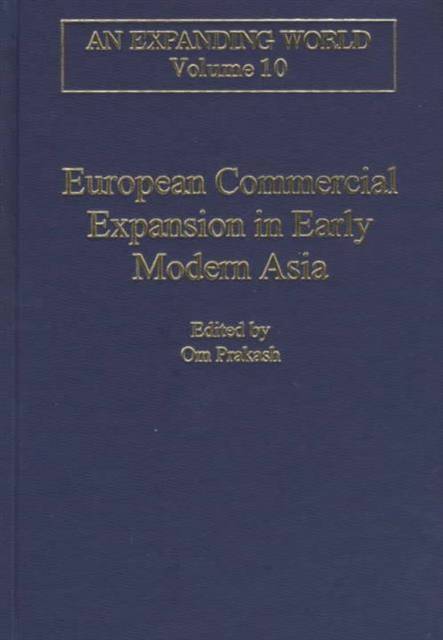
- Afhalen na 1 uur in een winkel met voorraad
- Gratis thuislevering in België vanaf € 30
- Ruim aanbod met 7 miljoen producten
- Afhalen na 1 uur in een winkel met voorraad
- Gratis thuislevering in België vanaf € 30
- Ruim aanbod met 7 miljoen producten
Zoeken
European Commercial Expansion in Early Modern Asia
€ 243,45
+ 486 punten
Omschrijving
Regular commercial contacts between Europe and Asia date back to at least the early years of the Christian era, but the pattern of trade underwent a structural modification following the Portuguese discovery of a route to the East Indies via the Cape of Good Hope. This volume illustrates the consequences of the arrival of large numbers of Europeans in the East. Europeans both participated in, modified and exploited existing trade relationships in the Indian Ocean and the Pacific. The studies reprinted here show how some environments, such as Japan, were hostile, whilst most states welcomed the European commercial contact. The necessity for Europeans to pay for Asian goods using precious metals is emphasised by the inclusion of articles in monetary transfers in Asian trade, a phenomenon which provides a link between economic developments in the Americas and those in Asia from the 16th century onwards.
Specificaties
Betrokkenen
- Uitgeverij:
Inhoud
- Aantal bladzijden:
- 356
- Taal:
- Engels
- Reeks:
Eigenschappen
- Productcode (EAN):
- 9780860785088
- Verschijningsdatum:
- 24/04/1997
- Uitvoering:
- Hardcover
- Formaat:
- Genaaid
- Afmetingen:
- 250 mm x 170 mm
- Gewicht:
- 775 g

Alleen bij Standaard Boekhandel
+ 486 punten op je klantenkaart van Standaard Boekhandel
Beoordelingen
We publiceren alleen reviews die voldoen aan de voorwaarden voor reviews. Bekijk onze voorwaarden voor reviews.










